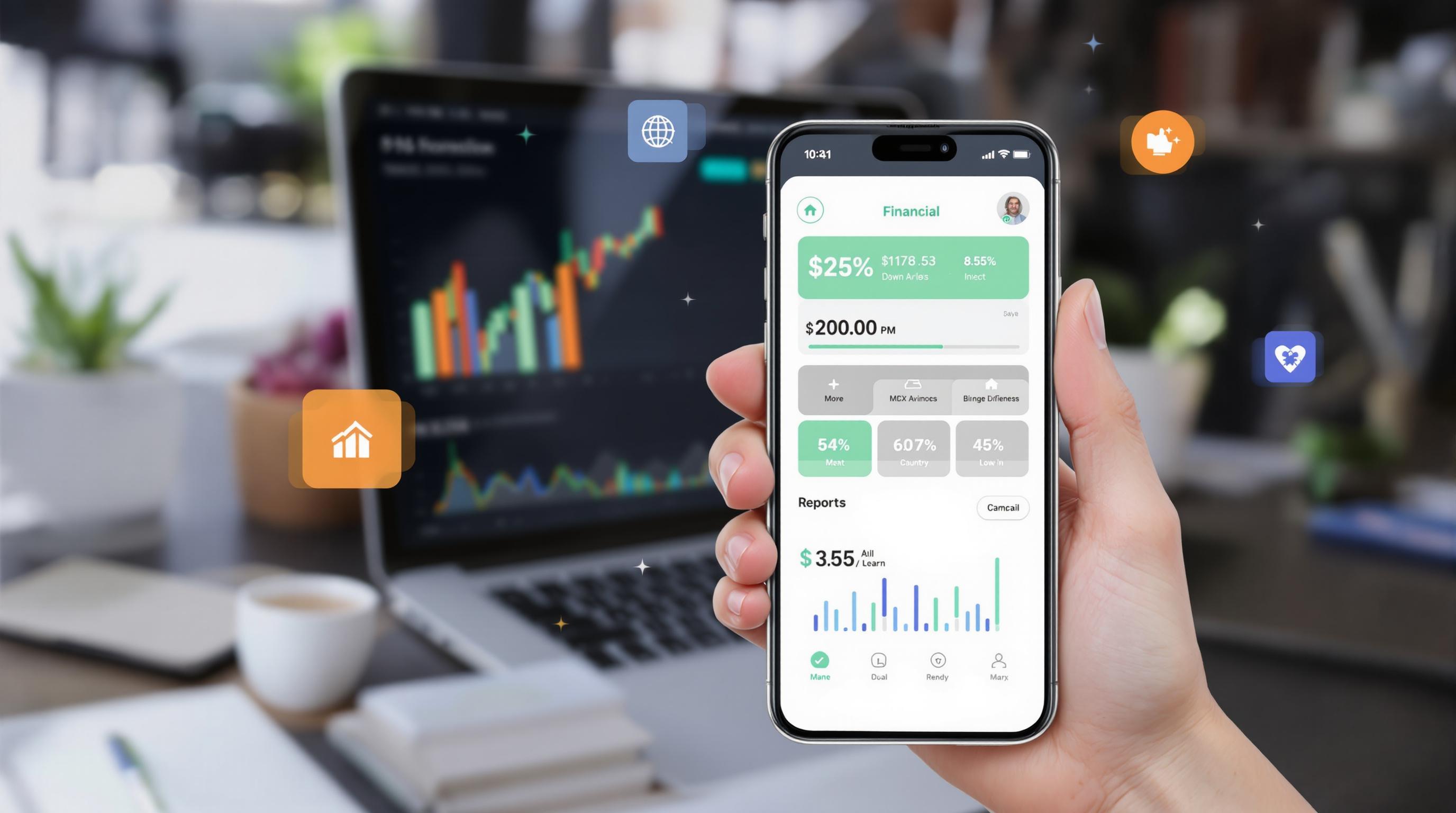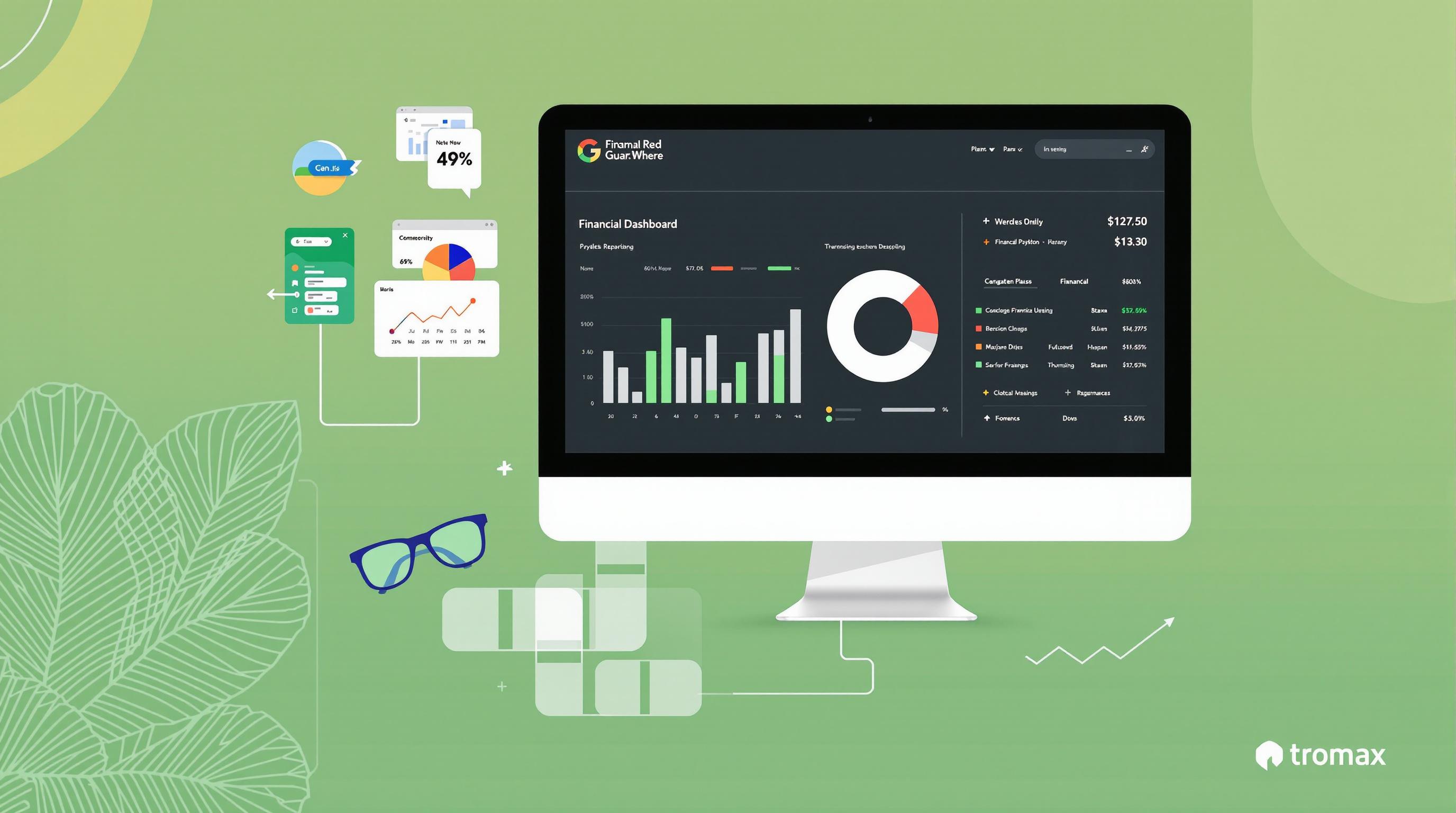Related Articles
- How Mobile Accounting Influences Entrepreneurial Mental Health and Work-Life Balance in Gig Economies
- The Quiet Costs: How Mismanaged Time Data Quietly Undermines Small Business Growth and Decision Making
- Top 5 Trailblazing AI-Powered Financial Reporting Apps Revolutionizing Accuracy and Speed Since 2019
- How Behavioral Economics Shapes Decision-Making in Financial Record Matching and Discrepancy Resolution
- How Subtle Shifts in Supplier Relationships Secretly Affect Your Company's Financial Health and Liquidity Balance
- Top 6 Payroll Solutions Born in the Last Five Years That Are Quietly Taking the Gig Economy by Storm
Top 7 Cutting-Edge Solutions Revolutionizing Corporate Financial Analytics Since 2019: In-Depth Reviews & Rankings
Top 7 Cutting-Edge Solutions Revolutionizing Corporate Financial Analytics Since 2019: In-Depth Reviews & Rankings
Top 7 Cutting-Edge Solutions Revolutionizing Corporate Financial Analytics Since 2019: In-Depth Reviews & Rankings
Introduction
Since 2019, corporate financial analytics has witnessed groundbreaking innovations that have profoundly reshaped how organizations interpret financial data and make strategic decisions. These cutting-edge solutions leverage artificial intelligence, machine learning, and advanced automation to deliver unprecedented accuracy and insights. This article explores the top seven technological solutions that have revolutionized financial analytics, providing in-depth reviews and rankings based on usability, innovation, and impact.
The evolution of financial analytics tools is partly driven by the increasing complexity of corporate finances, the growing volume of data, and the demand for real-time decision-making capabilities. Companies that have adopted these advanced solutions report improvements in forecasting accuracy, risk management, and operational efficiency. This article aims to guide businesses by highlighting the best innovations in the financial analytics landscape.
We have analyzed dozens of products and platforms, considering factors such as integration capabilities, AI sophistication, customization options, and return on investment. The following sections detail the seven most influential solutions since 2019, offering detailed rankings and critical insights to help financial managers and analysts choose tools that best fit their organizational needs.
1. ThoughtSpot Analytics Cloud
ThoughtSpot Analytics Cloud has emerged as a leader in operational and corporate financial analytics by blending search-driven data analysis with AI-powered insights. Since its launch, it has enabled business users to ask complex financial questions in natural language and receive instant, visually rich answers, eliminating reliance on specialized data teams.
With continuously improving AI models and seamless integration with existing ERP and financial systems, ThoughtSpot excels at democratizing data access and accelerating financial decision-making cycles. Its SpotIQ AI engine automatically detects key patterns and anomalies in financial datasets, offering proactive alerts that can significantly reduce financial risk exposure.
Overall, ThoughtSpot Analytics Cloud ranks high for ease of use and advanced AI capabilities. Gartner’s 2023 Magic Quadrant underlined its innovation, citing its ability to empower non-technical users as game-changing in financial analytics (Gartner, 2023). While pricing is premium, the ROI in terms of operational efficiencies makes it a compelling choice for large enterprises.
2. Microsoft Power BI (Financial Analytics Suite)
Microsoft Power BI continues to dominate as a versatile analytics platform, especially after its 2019 updates that enhanced financial modeling and predictive analytics. The Financial Analytics Suite within Power BI offers tailored templates and connectors for accounting and finance data sources, making the setup process faster and more intuitive.
This solution’s integration with Microsoft Azure’s AI services enriches financial forecasts by incorporating trend analysis, anomaly detection, and scenario planning. The customizable dashboards enable CFOs and controllers to track KPIs with real-time updates sourced directly from ERP and accounting software.
Power BI's affordability and wide adoption, combined with regular feature updates, make it a favorite among mid-to-large enterprises seeking flexible yet powerful financial analytics. The platform’s vibrant user community also fosters knowledge exchange, accelerating strategic analytics skills development (Forrester, 2022).
3. IBM Cognos Analytics
IBM Cognos Analytics brings robust AI-driven financial analytics capabilities that have evolved significantly since 2019. Its advanced data preparation, automated reporting, and augmented intelligence features help finance teams streamline workflows and reduce manual processing errors.
The platform emphasizes governance and security, essential for handling sensitive corporate financial data. Cognos’s integration with IBM Watson allows for predictive analytics and natural language querying, making it easier for finance professionals to uncover hidden insights in complex financial data.
Cognos Analytics remains a top choice for regulated industries such as banking and insurance, where compliance and audit trails are critical. Despite a steeper learning curve compared to some competitors, its enterprise-grade capabilities and comprehensive support justify adoption in highly controlled environments (IDC, 2021).
4. Oracle Analytics Cloud (OAC)
Oracle Analytics Cloud has progressively integrated cutting-edge financial analytics since 2019, focusing on embedded AI and machine learning to enhance financial planning, budgeting, and forecasting. Its multi-source data integration supports complex financial environments common in multinational corporations.
OAC’s self-service analytics approach empowers finance users to build custom reports and predictive models without heavy reliance on IT teams. Oracle’s use of autonomous services reduces administrative overhead and enhances scalability for growing organizations.
Oracle’s commitment to continuous innovation and cloud-first architecture places OAC highly on the list for enterprises seeking a comprehensive, scalable financial analytics platform. Industry analysts note its strength in financial consolidation and real-time analytics (Dresner Advisory Services, 2022).
5. Anaplan for Finance
Anaplan revolutionized corporate financial analytics by promoting connected planning across finance, sales, and operations functions. Since 2019, its platform enhanced real-time scenario modeling and what-if analyses, allowing CFOs to simulate the financial impact of business strategies dynamically.
The cloud-native architecture facilitates collaboration among stakeholders, breaking down data silos often encountered in financial analytics. Its user-friendly model-building capabilities invite financial analysts to experiment with variables and assumptions without coding.
Companies leveraging Anaplan report improved forecasting agility and alignment between finance and operational teams. However, the platform requires a significant upfront commitment to realize full value, potentially limiting accessibility for smaller firms (G2 Crowd, 2023).
6. Tableau (with Tableau Prep and Tableau CRM)
Tableau’s acquisition of startups and integration of advanced AI tools since 2019 have elevated its financial analytics offerings. The trio of Tableau Desktop, Tableau Prep, and Tableau CRM enables comprehensive data preparation, visualization, and embedded predictive analytics within corporate finance teams.
Tableau’s highly interactive dashboards help executives visualize cash flow trends, profit margins, and risk exposures instantly. Its strong data visualization capabilities simplify complex financial datasets, making it easier for decision-makers to grasp insights and act swiftly.
The platform’s wide adoption and intuitive design support both small and large enterprises. However, Tableau requires complementary data governance tools for enterprise-scale deployment, which may add to implementation complexity (Forbes Technology Council, 2022).
7. Adaptive Insights (a Workday Company)
Adaptive Insights has matured into a comprehensive financial planning and analytics solution tailored for corporate finance teams. Since its acquisition by Workday, the platform has integrated deeper with HR and operational data sources, enhancing workforce cost analysis and financial forecasting accuracy.
Its cloud-based modeling supports iterative budgeting and rolling forecasts, allowing finance teams to adapt quickly to market changes. Adaptive Insights also features automation capabilities that reduce manual data entry and reporting churn.
While especially favored by mid-market companies, its scalability and Workday synergy make it increasingly popular with larger enterprises. The solution earns high marks for user experience and responsiveness to evolving finance demands (Nucleus Research, 2023).
Honorable Mentions
Several other platforms have made noteworthy contributions to corporate financial analytics since 2019. Solutions like Qlik Sense, SAP Analytics Cloud, and Sisense continue to innovate with AI enhancements and improved integration but rank just below the top seven based on criteria such as ease of implementation and specialized financial features.
These honorable mentions remain viable options for companies with specific analytics needs or those already invested in their ecosystems. For example, SAP Analytics Cloud is ideal for organizations heavily using SAP ERP and finance systems, offering deeply integrated analytics capabilities.
Evaluating the fit between organizational needs, existing infrastructure, and cost considerations remains critical when exploring these alternatives. Keeping abreast of vendor updates is also recommended, as rapid technological advancements may shift rankings over time.
Conclusion
The period since 2019 has seen transformative advancements in corporate financial analytics, driven by AI, machine learning, and cloud technologies. The top seven cutting-edge solutions reviewed here showcase how innovation can enable finance teams to deliver more accurate forecasts, enhance risk management, and support strategic decision-making.
Organizations seeking to modernize their financial analytics infrastructure should consider not only feature sets but also ease of use, integration capabilities, and vendor support. The right investment can unlock significant efficiency gains and competitive advantages in today’s data-driven corporate landscape.
Staying informed about emerging trends and vendor roadmaps will ensure that businesses continue to harness the most effective financial analytics tools available. We hope this guide assists finance leaders in making evidence-based decisions for their analytics technology investments.




